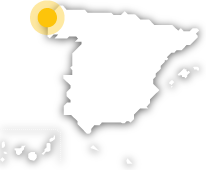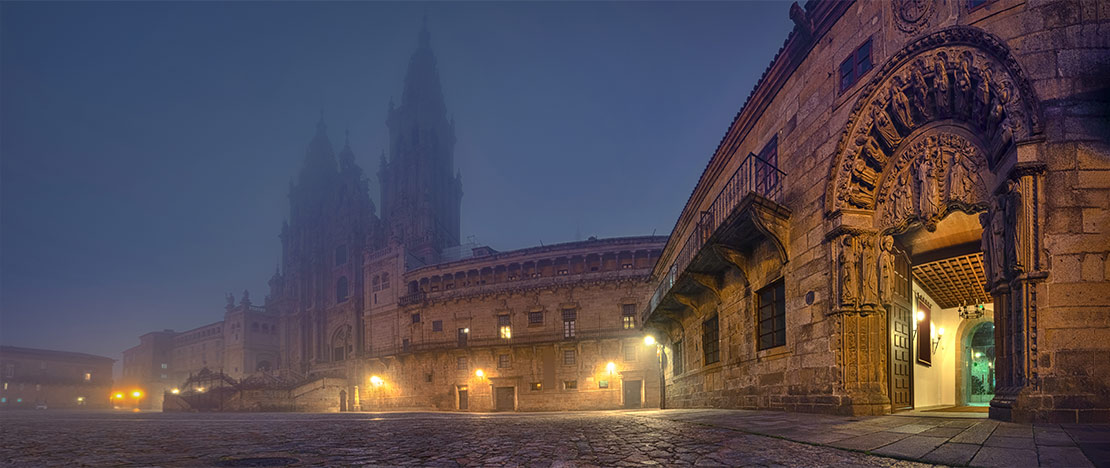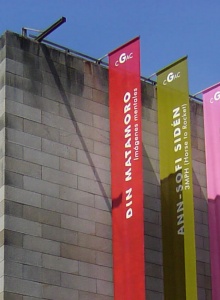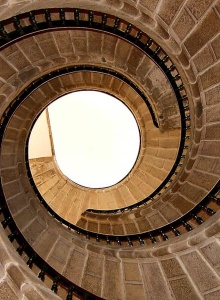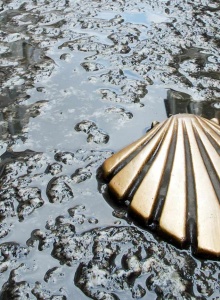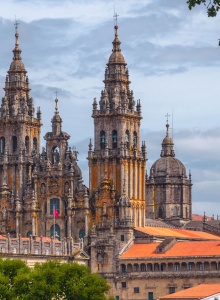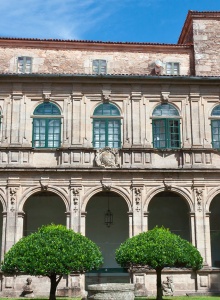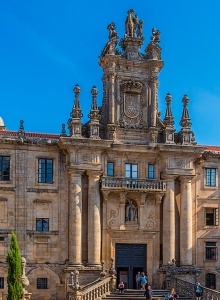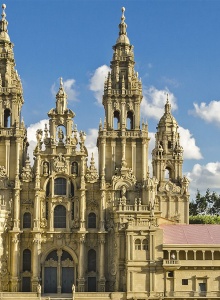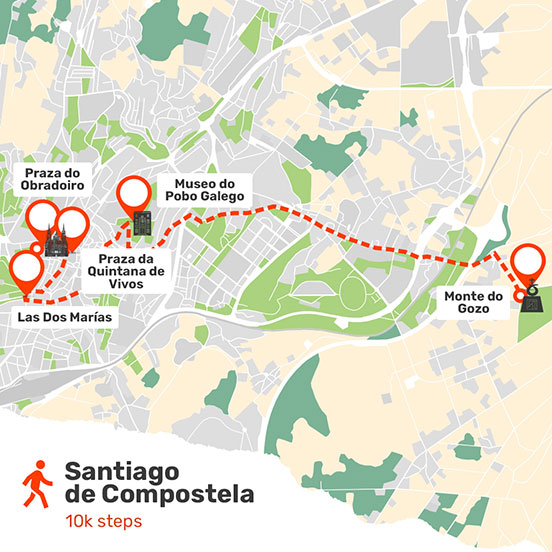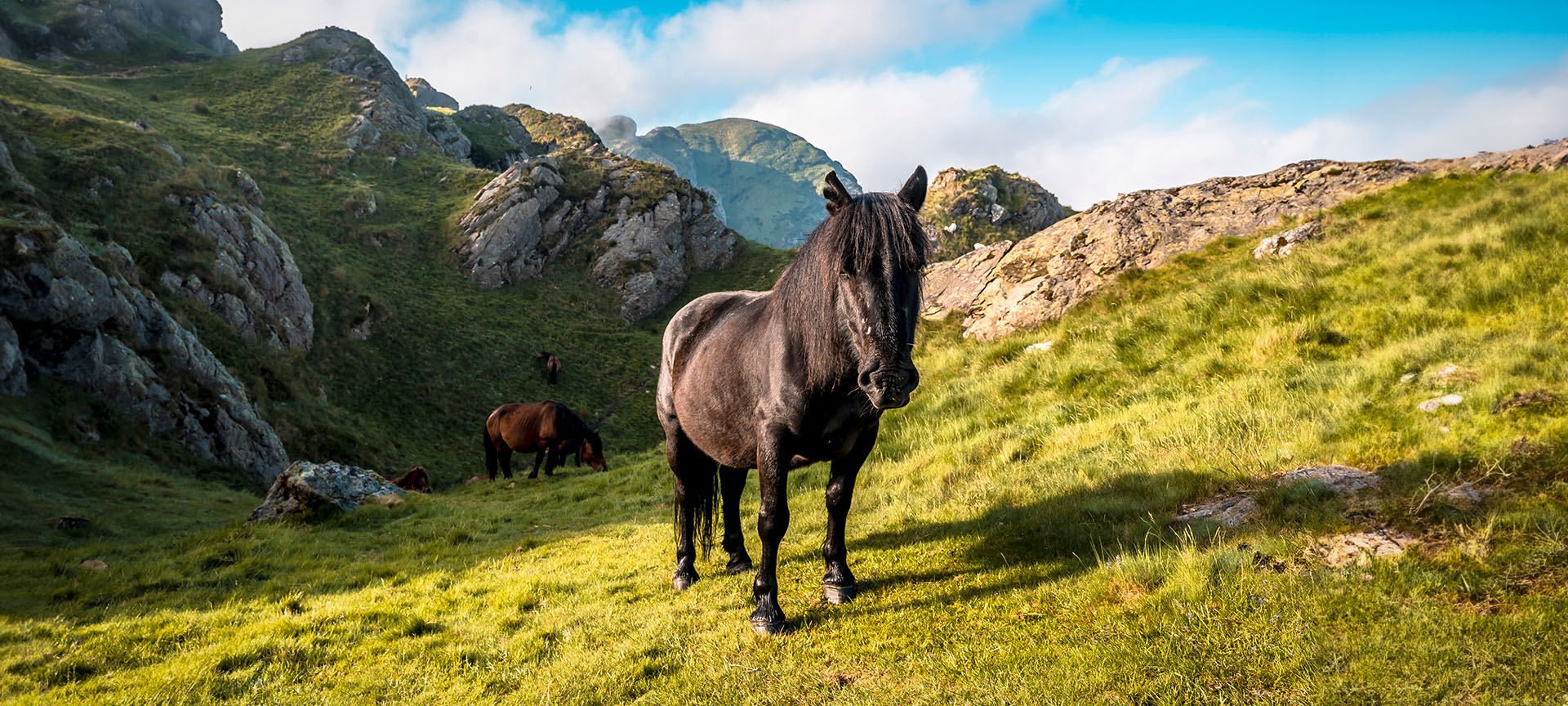MORNING
You will devote the first part of the day exploring the city’s symbol, its Cathedral, and other places of interest such as the Church and Monastery of San Martín Pinario.
Cathedral of Santiago Apóstol
There is only one way to start off a day in Santiago: at the Cathedral. We go in through the door leading from the Obradoiro square, where pilgrims will already have been arriving from far and wide since the early hours of the morning. The first thing we see is the Pórtico de la Gloria. Behind the mullion, years ago, people used to perform a curious ritual: knocking their heads three times (gently) on the statue of Master Mateo. This custom originates from the university students who used to do this to increase their intelligence and for good luck in their exams.
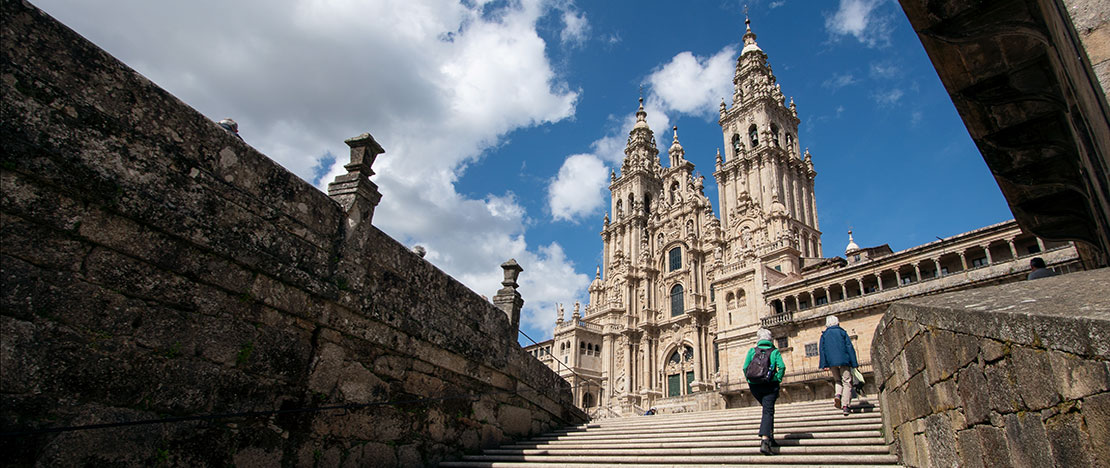
We follow the traditional route in our tour of the Cathedral and go down into the crypt, which contains the remains of the apostle. We then go up to the main altar to embrace the statue of Saint James and to get an unusual view of the Cathedral. As we go through the ambulatory, we will see the Holy Door, which is only opened in Holy Years (when 25 July falls on a Sunday). Going through this doorway is a very special experience, although the large crowds of people who do so in Holy Years mean you may have to wait.Entrance to the cathedral is free. However, you must book tickets to access certain areas. There are three types of tickets: to the Pórtico de la Gloria (there are also free invitations that can be picked up on the ground floor of the Casa do Deán), to the Permanent Collection, and to the Museum of Sacred Art of Santa María Real La de Sar.
The Cathedral roofs and the Pilgrims’ Mass
We decide to take the guided tour of the Cathedral roofs, which allows us to climb to the very top of the building and look out over the historic town centre from the heights. To do so, we head towards the Museum, located next to the Cathedral in the very same Plaza del Obradoiro. This itinerary takes us through the interior of Gelmírez Palace, past the Cathedral gallery (above the Portico of Glory) and up to the roofs of the cathedral. The sensation of the wind on your face, this elevated vantage point, the view… it will all leave you speechless.To make sure that you can visit the cathedral roof, we recommend booking in advance on the website. Behind the Cathedral, as we go out through the Azabachería door, we reach Plaza de la Inmaculada square with the Church of San Martín Pinario. The features worth noting in the interior include the restored walnut choir, originally from the Cathedral.
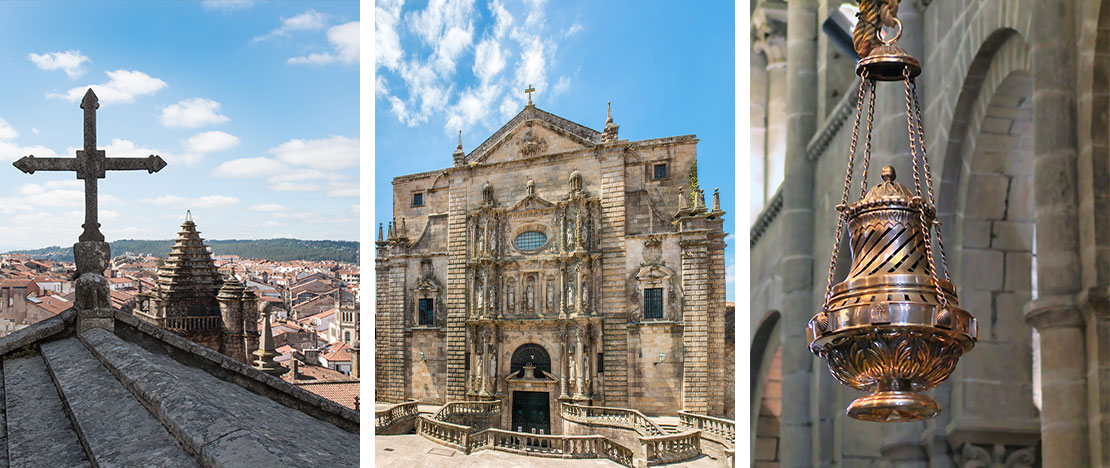
We return to the Cathedral to attend the Pilgrims’ Mass. This is celebrated daily at midday, and during the ceremony a welcome is extended to all the pilgrims who have completed the Way of Saint James.If you would like to see the Botafumeiro –a large incense burner– in action inside the Cathedral, bear in mind that it is only used during Mass on certain days of the year. If you want to ask for it to be used, go to the Pilgrims’ Reception Office. Due to restoration work inside the Cathedral, the Botafumeiro is not currently in operation.After mass, we take a quiet walk on the squares around the Cathedral (Quintana, Platerías, Obradoiro) to observe the details of each façade, and capture them for posterity with our camera.
Shopping and lunch in the old town
We walk towards the streets of Rúa do Franco, Raíña and Rúa do Villar in the historic quarter. The tourist offices and the pilgrims’ centre are here, as well as a host of businesses and shops selling crafts, souvenirs, clothing, food... even small book and antique markets. Silver and jet are traditional local purchases, as well as everything to do with the Way of Saint James and the Apostle (botafumeiros, scallop shells, staffs, etc.). You will also find ceramics, leather, classic Galician bagpipes and figurines of “meigas” (the Galician name for witches). There are two other shopping streets as well, all of them running parallel to one another: Rúa Nova and Rúa Calderería, which Santiago locals frequent for their regular shopping.
We make a brief stop in the Rúa do Franco to see the Renaissance cloister in Fonseca College, which houses the library of the University of Santiago. There are also numerous bars and restaurants in this area. We can stop and have lunch whenever we like. We'll try some portions to share and local specialities. Good suggestions include pulpo a feira (octopus), gammon with turnip greens or potatoes, empanada (savoury filled pastry), marinated pork, calamari, Padrón peppers (only in season, and be careful – some are very spicy!), steamed mussels, caldeirada (fish stew), pote (traditional Galician bean stew), fish or shellfish. And all accompanied by Galician wine (for example, Ribeiro or Albariño). For dessert, we'll order two local classics: tarta de Santiago (almond cake), and orujo liqueur (traditional orujo is colourless, but other flavours include herbs, cream, coffee, etc.).Another good option at lunchtime is the Abastos Market, a food market which is open Monday to Saturday from 8:00 a.m. to 2:00 p.m. In addition to seeing its architecture and stalls selling fish, meat and vegetables, you can enjoy its take-away food stands, eat dishes that are cooked for you on the spot or try the famous tapas.

